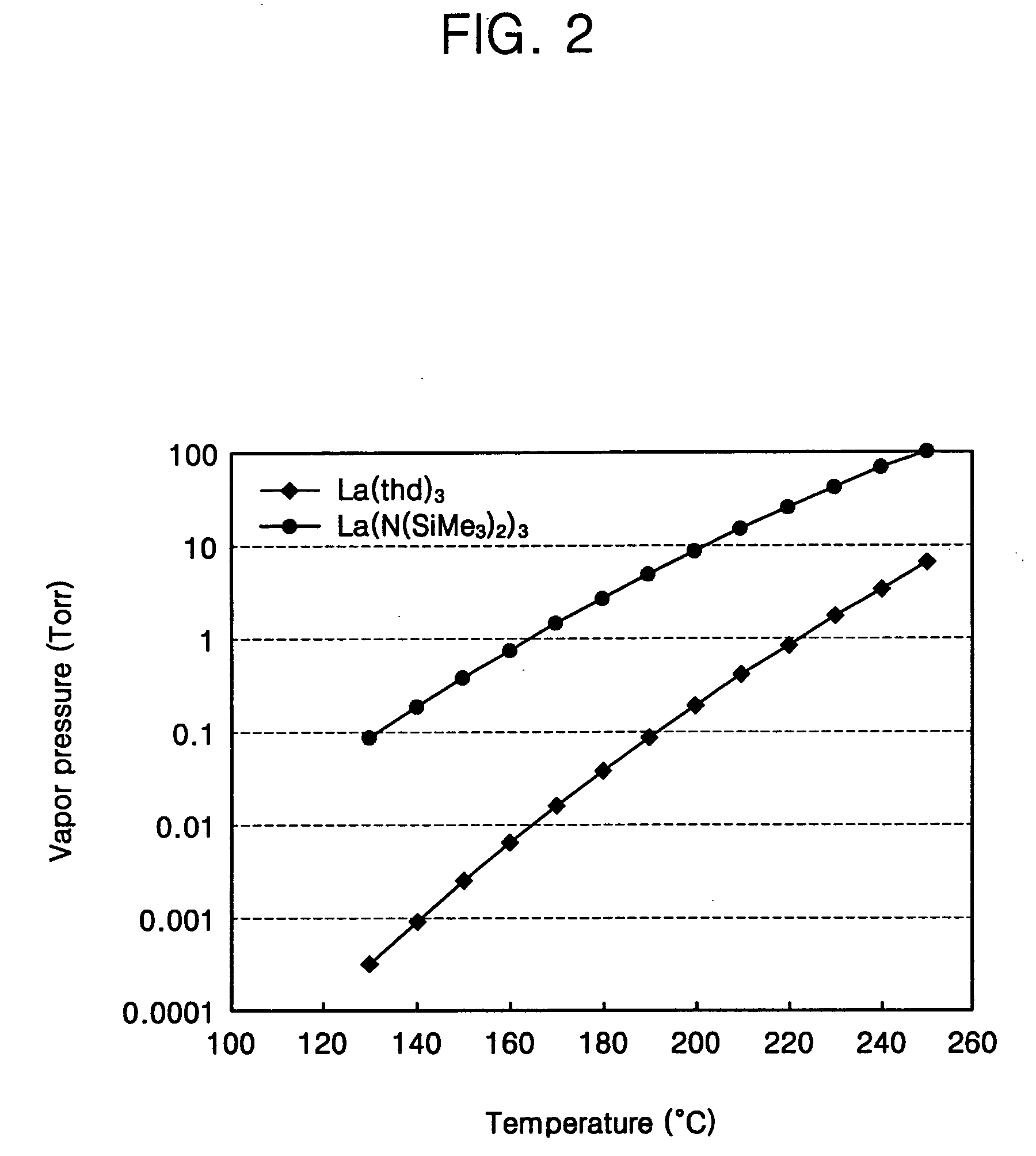Method of fabricating lanthanum oxide layer and method of fabricating MOSFET and capacitor using the same
a technology of lanthanum oxide and mosfet, which is applied in the field of methods of fabricating mosfet and capacitors using the same, and methods of fabricating lanthanum oxide layers. it can solve the problems of increased leakage current, unsuitable dielectric layers for use in semiconductor devices, and increased leakage current, so as to improve the layer formation productivity
- Summary
- Abstract
- Description
- Claims
- Application Information
AI Technical Summary
Benefits of technology
Problems solved by technology
Method used
Image
Examples
Embodiment Construction
[0028] The present invention will now be described more fully hereinafter with reference to the accompanying drawings, in which preferred embodiments of the invention are shown. It will be understood, however, that this invention may be embodied in many different forms and should not be construed as being limited to the embodiments set forth herein. Rather, these embodiments are provided so that this disclosure will be thorough and complete, and will fully convey the scope of the invention to those skilled in the art. In the drawings, the thicknesses of layers and regions are exaggerated for clarity. Like numbers refer to like elements throughout the specification.
[0029]FIG. 1 is a process flow chart illustrating the sequential steps in a method of fabricating a lanthanum oxide layer according to an embodiment of the present invention.
[0030] An atomic layer deposition (ALD) method is a preferred technique used in the method of fabricating a lanthanum oxide layer according to an em...
PUM
| Property | Measurement | Unit |
|---|---|---|
| pressure | aaaaa | aaaaa |
| temperature | aaaaa | aaaaa |
| dielectric constant | aaaaa | aaaaa |
Abstract
Description
Claims
Application Information
 Login to View More
Login to View More - R&D
- Intellectual Property
- Life Sciences
- Materials
- Tech Scout
- Unparalleled Data Quality
- Higher Quality Content
- 60% Fewer Hallucinations
Browse by: Latest US Patents, China's latest patents, Technical Efficacy Thesaurus, Application Domain, Technology Topic, Popular Technical Reports.
© 2025 PatSnap. All rights reserved.Legal|Privacy policy|Modern Slavery Act Transparency Statement|Sitemap|About US| Contact US: help@patsnap.com



